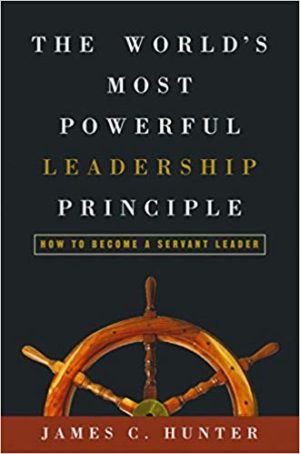Jim Hunter’s previous book, “The Servant,” was an allegory that told the story of a business leader whose life was spiraling out of control in every arena. He attends a leadership retreat where the instructor, a former businessman now monk, leads him to realize that true leadership is not built upon power, but on influence or authority, which results from relationships, love, service, and sacrifice.

This second book from Hunter, “The World’s Most Powerful Leadership Principle: How to Become a Servant Leader,” is just that, a how-to book describing Hunter’s thoughts for growing into a servant leader.The goals that Hunter establishes for this book are to: 1) define servant leadership and 2) provide a map for implementation of servant leadership.
The author defines leadership as “the skill of influencing people to enthusiastically work toward goals identified as being for the common good.” The first few chapters discuss the concept of leadership and build out the definition of servant leadership. Leadership is not management and it is not based on power or position. True leadership is influence (the author calls it authority) that is built upon skills and character.
Love is the critical difference that underlies the relationships, service, and sacrifice of servant leadership. This love is not the warm, fuzzy feeling that today’s culture has redefined love to be; rather, it is the other-focused verb that has been the definition of love for eons. The author defines love in leadership as “the act of extending yourself for others by identifying and meeting their legitimate needs and seeking their greatest good.”
The author uses 1 Corinthians 13 to describe the characteristics of love in a servant leadership context. Leadership requires patience, kindness, humility, respect, selflessness, forgiveness, honesty, and commitment. None of these characteristics are soft or wimpy, but are strong and positive.
For most people, the practice of servant leadership requires significant character growth that makes these practices a normal part of daily habits. The author presents a simple model of change or character growth, with three steps. Step 1 is called Friction, where pain or discomfort is felt from the difference between the practices that result from current character and what might result after some character growth. Step 2 is Insight, which involves the development of an understanding of the impact that character growth can produce. Step 3 is the Will = Intention + Actions phase, in which a committed practice of new behavior is used to change character over time.
The author points out that, despite the awesome responsibility of leadership of an organization’s most important asset, many do not see the importance of investing in the development of leadership. Nor do they realize the benefit that results from good servant leadership as it better meets the needs of workers in the organization.
This is a good book that presents servant leadership well. It is always difficult to adequately describe the effort required to make the character change that is often necessary to be effective as a servant leader.

Add your comment